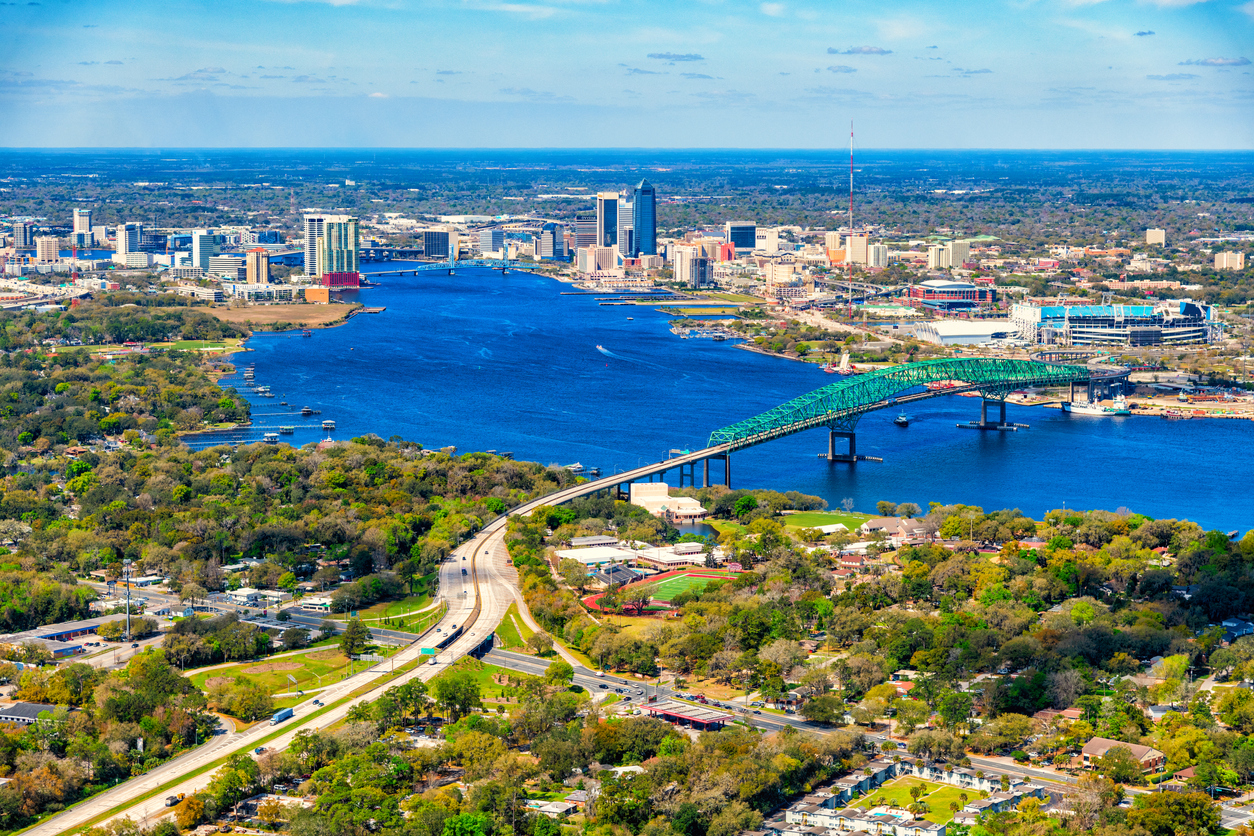The pattern in the Sunshine State reflects a nationwide trend. The coastal population in the U.S. more than doubled in the past 60 years, outpacing the country’s overall growth rate during the same period by 17.5 percentage points. The 2020 census was the first decennial population tally since 1990 in which coastal counties grew faster than inland ones, compared with the previous decade.
Coastal counties are those that are adjacent to seawater or coastal waterways. In the U.S., there are 254 coastline counties, stretching across parts of 23 states. Scientists are concerned about the increased populations living in areas vulnerable to shoreline erosion and extreme-weather events.
Those with low-lying shorelines are at increased risk because of rising seas, according to Doug Marcy, coastal hazards specialist at the National Oceanic and Atmospheric Administration’s Office for Coastal Management.
“I think sea-level rise is one of the most tangible impacts we can see of climate change,” he said.
The global mean sea level is increasing by 3.6 mm, or about 0.1 inch, a year, according to a recent report by the Intergovernmental Panel on Climate Change. The report attributes much of the rise to warming ocean waters and glaciers melting during the past century.
Beyond the lost land, rises in sea levels threaten to increase the severity of extreme weather and bring storm surges farther inland, according to NOAA.
“We look at it as an exacerbator of existing hazards,” Mr. Marcy said.
Weather events continue to be more frequent and intense, according to the report. Hurricane Ida left more than one million customers without power in Louisiana, and companies estimate there was more than $15 billion in insured losses. Days later, the storm brought deadly flash flooding to the Northeast.
Along the Florida coast, the IPCC report’s intermediate scenario forecasts sea levels will have risen by a foot between 2050 and 2060, compared with a 1995-2014 baseline. By 2090 it will have risen a total of two feet from the baseline.
Florida is the most expensive state in the U.S. for home insurance. Residents are projected to pay on average $2,380 in premiums this year, a 21% increase over the $1,960 paid in 2018, according to estimates by trade group Insurance Information Institute.
But the risk hasn’t stopped home buyers from snatching up properties quickly. St. Johns County, part of the Jacksonville metropolitan area, was the second fastest-growing coastal county in the nation between 2010 and 2020. Homes built away from the coast but near the region’s snaking waterways may still be affected by a rising sea.
Even if not fully submerged, these properties and the infrastructure that supports them may become inaccessible due to more high-tide flooding, according to NOAA.
“Especially some of the older communities that have aging infrastructure for storm-water systems,” Mr. Marcy said. “These systems were potentially not designed to handle that amount of water.”
Florida also faces another hurdle to address a rising ocean—porous bedrock. Saltwater flows into the limestone aquifers and raises the overall water table, which can exacerbate high-tide flooding. It also can salinate inland freshwater wells.
During this year’s budget proposal in July, Jacksonville Mayor Lenny Curry recommended spending $54 million on resiliency projects to address sea-level increases. Earlier this year, the council created a new position for a chief resiliency officer who would oversee these projects. The council will vote on the budget before Oct. 1.
Coastal rise will be determined by near-future actions across the globe, and regional adaptations can help reduce risk exposure, according to the IPCC. Communities could modify coastlines by erecting physical barriers like sea walls to provide protection. A New Orleans storm system that was built after Hurricane Katrina alleviated Hurricane Ida’s storm surge, according to officials. Ecosystem-based adaptations such as marsh mitigation can also be deployed to reinforce the coastline.
“With sustainability you want to have economic growth, but you also want to try to preserve why people want to live there,” Mr. Marcy said. “I mean people come to the coast for a lot of reasons, but a lot of it is because of natural ecosystems.”












